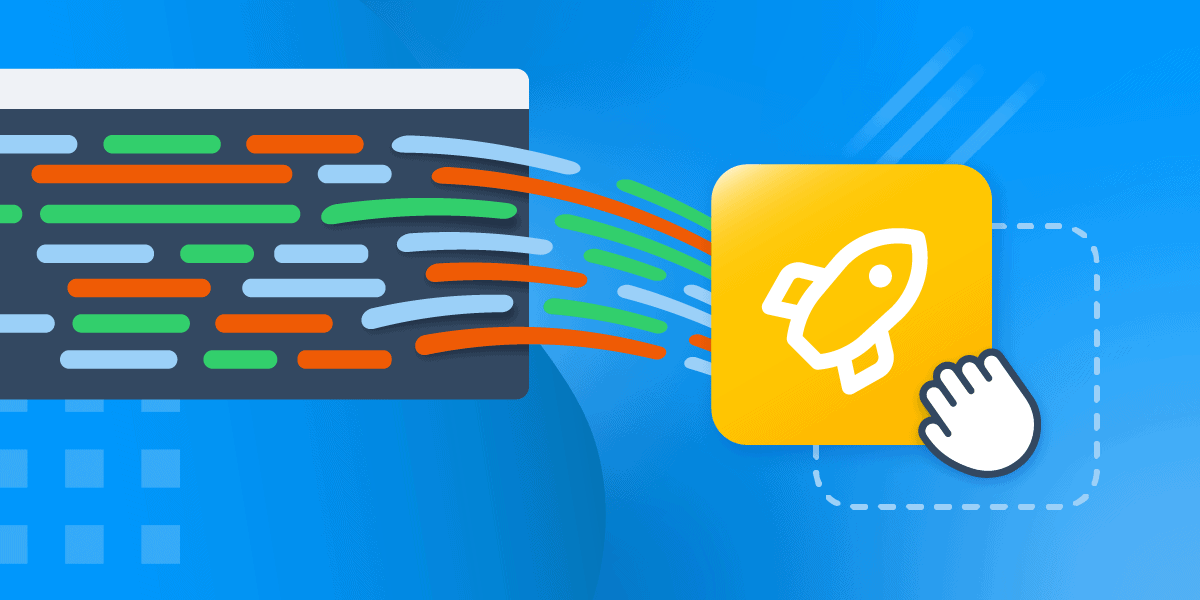Launch a Citizen Development Program in Four Easy Steps

Citizen developers are business users who have little to no coding experience but have the ability to build internal applications and softwares with little oversight using IT-approved technologies. And this quickly growing trend just might impact the IT field as we know it forever.
With the pandemic, Great Resignation, developer shortage and competitive IT career landscape, hiring the development talent required to keep up with organizational software needs is nearly impossible. Because of this, roughly 60% of organizations have or plan to have an active citizen development program utilizing low-code no-code technologies to help alleviate the stressors.
If you plan to build out your citizen development program, we’re covering four easy steps for implementation!
Building Out a Citizen Development Program
Building a citizen development program that leverages low-code no-code applications offers numerous benefits to your organization– ramping up deployment time, finding talent worldwide and reducing business costs to name a few.
Essentially, anyone within your organization has the ability to be a citizen developer, therefore freeing up a great deal of time for your IT team to focus on more strategic endeavors. That’s why it's no surprise that 92% of IT leaders are comfortable implementing this model. And if you’re one of them, here are four easy steps to help get your citizen development program started:
1. Identify the opportunity potential in your company
The first step for building your citizen development program is to identify all the opportunities where low-code no code-applications will support the goals of your organization. A few areas where it may support your business include:
- Enhancing innovation and team efficiency
- Increasing deployment speed and team performance
- Increasing organizational IP
- Reducing the risk of shadow IT
- Providing cost effective alternatives to hiring more developers or outsourcing
- Scaling the skills of your existing employees
Begin by reaching out to leaders of each department to get an understanding of what specific goals they have for their department. You can send them a survey or host a workshop to get a deeper understanding of the software’s their teams will require to achieve these goals. This will help in a few areas:
- You will be able to align your organization and get cross-departmental
- You will help build organizational buy-in by including everyone
- You will be able to evaluate which departments are the most open to implementing a citizen development program
2. Create the foundation to launch and scale over time
70-95% of digital transformation initiatives fail. This is often because organizations don’t build a healthy foundation prior to launching new softwares within the organization. If you're going to invest in the software to support citizen development, it’s critical you have three things:
1. Buy-in from business leaders and IT
Lack of leadership buy-in is a huge reason new technologies ultimately go unused within an organization. Think about it– if leadership doesn’t understand the value of new tools, why would the end users?
To avoid this, partner with leadership and other management to support your citizen developer vision. You will want to do this in a few strategic steps:
→ Step 1: Involve business leaders who will be directly affected from the start. Collaborate with them and build the vision with them so they can understand how low-code no-code apps will improve their department workflows.
→ Step 2: Ask IT employees where citizen development may help them free up time day-to-day.
→ Step 3: Once you have an idea of what management and IT both need, make a clear plan that defines the responsibilities of IT and citizen developers. This will set the groundwork for clear communication from the start and minimize complications and conflict down the road.
2. A technical framework to enforce the program
One concern IT leaders may have regarding their citizen development program is security. With the leading causes of security breaches stemming from misconfigurations, human error, and poor maintenance- it’s a legitimate concern.
This makes having a technical framework that provides oversight requirements for your citizen developers critical. Your framework should address the following:
- All IT-approved low-code no-code softwares
- Who will build apps on the new and easy platform
- How apps are built
- When citizen developers can and should build apps
- Where apps will be built
- Which applications require IT oversight and the level of oversight required
Building this level of governance into the foundation of your citizen development program will not only ensure security– but it will set the roadmap for training and educational resources that allow it to pilot and scale.
3. Education resources and support for citizen developers
Getting end-user buy-in is critical to the success of your citizen development program. And it starts by providing the necessary educational resources and training materials. Here are quick tips to set up a successful training model:
- Help them understand the planning process and why the tools are being implemented before you ask them to start building applications
- Implement a review process to avoid silos
- Don’t add to their tech stack, rather, help them integrate with your new tools with their existing SaaS tools
- Provide training to educate them about version control, management practices, application testing, etc.
Additional ways for gaining the support and pioneering the success of your citizen developers include:
- Implementing low-code no-code applications that will result in quick wins
- Celebrating their achievements and wins– big and small– along the way
3. Establish development standards to support business users
Even though low-code no-code applications are in place to lift the burden off your IT teams, management will still need to oversee development standards put in place for citizen developers. The standard should include guardrails and clear instructions for:
- Application lifecycle management
- Development guidelines
- Approval processes
- Compliance and security concerns
- Testing methodology
- Change management
- Incident support
- Existing architecture
- On-going training
- Reporting and analytics
Implementing these development standards will ensure your citizen developers aren’t feeling in over their head in terms of application deployment. Development standards will help them understand who the app is for, why it’s being built and the desired result of implementing it.
4. Scale your citizen developer program
Now that you have the proper buy-in, frameworks and governance models in place, you can prepare to launch your program and build processes to ensure its ongoing success. Here are three suggestions for getting started:
- Start with a pilot program: Preselect qualified citizen developers to start the program. Beginning with this select group will allow you to test, iterate and perfect your citizen developer program prior to releasing it to the larger organization.
- Get feedback: As you release your program, collect ongoing feedback from your citizen developer community about what works and what doesn’t to improve the program.
- Measure KPIs: Lastly, to continue fueling your leadership buy-in, share your metrics with stakeholders to scale your program and enhance your G2M strategy. KPIs to measure include:
- Speed & efficiency: Explaining which citizen-developed applications have streamlined workflow production.
- Increased IT bandwidth: Measuring the percentage of applications or development hours citizen developers have removed from IT’s plate.
- Innovation: Number of applications citizen developers create that pioneer innovative efforts.
- Enhanced organizational IP: Measure the number of applications developed to automate proprietary processes.
- Reduced shadow IT: Number of apps maintained outside the oversight of IT.
The Future is Low-Code No-Code
Implementing a citizen development program is a sure fire way to streamline your
IT’s bandwidth without sacrificing your business unit’s workflows or customer expectations. With these four simple steps, you can build a solid foundation for your program followed by a streamlined process that will eliminate internal silos and become embraced by your entire organization.
To help with your low-code no-code research, check out our free eBook, Coding Beyond Tradition. Inside, you will learn:
- The need driving low-code no-code
- How it's accelerating IT and reducing costs
- The right questions for evaluating your coding requirements
Ultimately, citizen development is changing the way IT works forever.
Coding Beyond Tradition
Low-code no-code is the future of business communications.
Read our guide to learn how to leverage citizen developers
to lower barriers and accelerate IT objectives.
